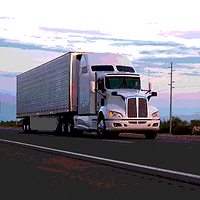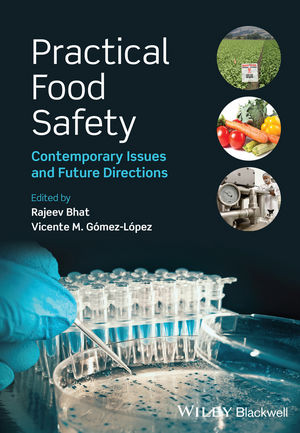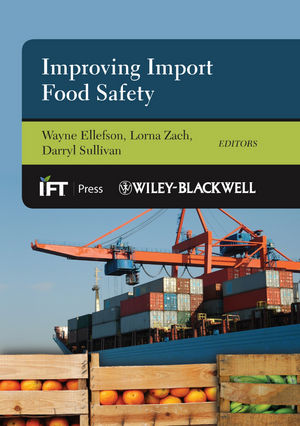Safely Feeding America

One day in 1969, retired businessman John van Hengel met a desperate mother rummaging through grocery store garbage bins to find food for her children. Van Hengel met the woman while he was volunteering at his local soup kitchen. She told van Hengel there should be a place where, instead of being thrown out, discarded food could be stored for people to pick up—similar to the way banks store money for future use. That mother’s wisdom gave birth to a new industry that feeds the hungry.
After that encounter, van Hengel established St. Mary’s Food Bank in Phoenix, AZ, as the first food bank in the United States. In its initial year, St. Mary’s distributed 275,000 pounds of food to people in need. Word of the food bank’s success quickly spread, and by 1977, food banks had been established in 18 cities across the country. As the number of food banks continued to increase, van Hengel saw the need for a network organization to help them grow and coordinate. In 1979, he and other partners founded a national organization for food banks called Second Harvest. The network changed its name in 2008 to Feeding America.
Today, Feeding America is the nation’s largest domestic hunger-relief organization—a powerful and efficient network of 200 food banks across the country. As food insecurity rates hold steady at the highest levels ever, the Feeding America network of food banks has risen to meet the need. The network feeds 46 million people at risk of hunger, including 12 million children and 7 million seniors annually.
Feeding America and its partners not only lead in hunger-relief efforts, but they also lead the hunger-relief community in providing safe food. The rapidly changing product mix from shelf-stable to perishable foods flowing into food banks compels the network to develop increasingly sophisticated food safety practices so that such products reach the consumer safely. Accordingly, Feeding America is working hard to help its member food banks continuously improve their food safety acumen (see “Food Safety in the Feeding America Network,” p. 64). This important work reflects our commitment to establish, maintain and sustain robust standards that carefully steward our donors’ resources to provide safe food to the people we serve.
Taking a Giant Step Forward
Feeding America is fortunate to have an enduring relationship with Cargill. Over the years, Cargill has been generous in its support for both Feeding America’s national office and our member food banks across the country. In 2012, our partnership with Cargill took a significant step forward when Feeding America started thinking more critically about the future of food safety. With the Food Safety Modernization Act (FSMA) moving forward, Feeding America saw the need for the network to be well prepared for the final FSMA rules. We asked Cargill to help this effort through funding for staffing, educational summits and third-party food safety audits. Cargill understood the importance and urgency of our proposed food safety strategy and got the program off the ground with a 2-year grant.
Third-party food safety audits were new to the network and participation was voluntary. Although progress was slow at first, early adopters of the auditing program soon recognized and communicated the benefits of participation. These benefits include: 1) better depth of understanding of their food banking operations; 2) increased efficiencies in their operations through written Standard Operating Procedures; 3) improved staff training; 4) improved management of pest control operator relationships; and 5) higher operational standards and results. After the first year of training audits, a handful of early adopters started scored audits, which they passed with high scores. Notwithstanding this incremental success, it was clear we needed to do more to encourage the rest of the food banks to engage in the program. As the initial grant period ended, Feeding America approached Cargill with another idea. We wanted to focus on providing resources to achieve a holistic shift in food bank food safety culture. Our vision went beyond auditing and deeper than the food bank level. We wanted to provide educational opportunities and resources to our 60,000 agency partners (soup kitchens, shelters and pantries)—the end of the supply chain. Cargill endorsed the concept with a generous 3-year grant to support the enhanced food safety initiatives we envisioned. Once Cargill said yes, we quickly got busy.
Building the Foundation
We developed a multifaceted approach to reinforce the food safety programs that already existed in the network. Our challenge was to provide the same opportunities and information to each food bank while avoiding a cookie-cutter approach that ignored each food bank’s unique situation, knowledge base and resources. We overcame this challenge with five specific action items.
1. Provide dollars to support improvements. Initially, we created a considerable amount of conversation to get food banks to participate in the third-party auditing program—seizing every opportunity to discuss it. There was a lot of trepidation within the network about our chosen vendor’s distribution center standard and how it would impact operations. Many of the food banks wondered if the application of a food manufacturing standard even made sense. Thus, we faced a great deal of pushback, and understandably so. Who wants another audit? In an effort to respond to this anxiety, we sought to incentivize participation by providing grants. We developed a request for proposals so the network could access grant dollars specifically for food safety improvements. The key eligibility requirement was that the food bank applicant had to be actively participating in the program by having completed a training audit within the last 12 months. The grant dollars would be utilized to correct any issues identified in the food bank’s third-party audit report. The grants quickly became very competitive and created a buzz about the food safety program within the network. Activity in the program soared. It became so well socialized that within 1½ years, we achieved over a 90 percent voluntary participation rate in the network.
2. Free education and training for the network. We decided that we needed to create a forum or summit to deliver specific information regarding our vendors’ distribution center standard. We developed our Food Safety Summit (FSS) to bring network staff together to learn the critical elements of the new standard. The FSS was initially for those food banks that self-identified as needing additional education and training in food safety, but it became a training opportunity for all network food banks. The FSS takes place at a food bank that passed a scored audit and is a 2-day, intensive drill-down of the new distribution center standards by a qualified instructor from the audit vendor. The FSS also includes a complete warehouse walk-around to illustrate examples of how the new standards should be implemented. These summits were a success and greatly advanced our education and training plan. As we had hoped, the FSS provided a safe environment for people to learn and ask questions among peers, thereby creating an atmosphere that encourages team building, networking and sharing of best practices. Funds from the Cargill grant allowed Feeding America to provide training for more than 250 individuals from all 200 food banks. Now the fundamental issue—lack of understanding of the expectations of the new distribution center standard—no longer existed.
3. More free education and training. With the success we achieved with the FSSs, we wanted to continue building on the education-and-training component. We needed data from the network to determine where we should focus our limited resources and what type of training was necessary. After consulting with Walmart’s vice president of food safety, Frank Yiannas, we decided to undertake a food safety risk assessment. We enlisted our consultants, Deloitte & Touche, to help with this evaluation. The team decided to conduct the assessment during food banking’s busiest month of the year, December, when the food banks would be already stressed and any weaknesses in the system would become immediately apparent. We completed the risk assessment, and results identified high-risk areas of Hazard Analysis and Critical Control Points (HACCP) and food defense. Once we exposed these high-risk areas, we then started working on reducing them.
The first thing Feeding America did was to offer free certification classes for HACCP, Seafood HACCP and Food Defense to food bank network staff. The training strengthened the network’s already growing food safety knowledge, allowed the individual food banks to have staff with the depth of knowledge necessary to manage all types of foods and helped fill the gaps identified. We also provided food safety webinars that focus on these and other relevant network topics and provide additional opportunities to discuss common food safety challenges that exist at food distribution centers. These outreach efforts provided the network with a greater understanding of the many aspects that are key for moving food safely through their facilities.
4. Education for the end of the supply chain. As we expanded the network’s food safety knowledge, we knew we had to provide substantive education for the 60,000 agency partners. To do so, we needed to develop a comprehensive food safety curriculum. Accordingly, in October 2012, Feeding America began a partnership with the National Restaurant Association to create a customized curriculum for the hunger-relief community. Two years later, in August of 2014, we introduced the ServSafe® Food Handler Guide for Food Banking to the network (see “ServSafe® Food Handler Guide for Food Banking”). The book is 46 pages, filled with images that are relatable to the intended audience (food bank staff, partner agency staff and volunteers), offers opportunities to “apply your knowledge” in each chapter and includes a final quiz and a certificate of completion. The network’s desire for the book was so great that we distributed more than 10,000 copies within 10 months. The book is currently in its second printing.
5. Focus on TCS foods. The network’s capacity to access retail stores across the country increased exponentially in a few short years and quickly became one of the largest food streams. As a result, we needed to develop food safety guidelines for temperature controlled for safety (TCS) foods and other perishables. To meet this challenge, Feeding America released the Retail Food Safety Guidelines in March 2014 for the network to provide appropriate guidance for handling TCS foods and produce. This comprehensive guide, in conjunction with the ServSafe® Food Handler Guide for Food Banking, provides basic food safety concepts and instruction about safe handling practices and how to implement and execute them.
Expanding Opportunities
As Feeding America continues to reinforce the foundation of food safety across its food bank network, the search for new food streams remains ongoing (see “Getting Involved”). The food bank network has been focused on food waste reduction for over 35 years—keeping safe, nutritious foods out of the landfill and getting it onto the table. Recently, “food waste reduction” has become a buzz phrase—a part of the food industry vernacular. Like Feeding America, food manufacturers, the U.S. Environmental Protection Agency and the U.S. Department of Agriculture (USDA) are working toward reducing food waste. With all of these stakeholders focused on the same issue, communication and cooperation are imperative. The following success stories highlight the positive impact collective action has on food recovery and food waste reduction.
In 2012, Feeding America began working with the USDA-Food Safety Inspection Service (FSIS) to discuss food donation opportunities that were available but unattainable under USDA regulations. Our initial discussions focused on how food banks could accept bulk protein donations and distribute such product to hungry people. Opportunities for bulk protein donations were available, but most agency partners cannot store or distribute large, frozen bulk proteins. Additionally, most do not have the appropriate facilities to break down the product into smaller, consumer-size packages. Food banks have the facilities to accomplish this task; however, most do not have a USDA inspector on-site. After continued conversations and information sharing, FSIS determined that food banks could repack bulk proteins by utilizing a retailer exemption. The exemption was predicated on the food banks only distributing repackaged product directly to the end consumer through one of three channels: through a food bank-owned/operated pantry; an on-site meal provider/soup kitchen; and/or a mobile pantry food distribution. The retailer exemption has allowed the food bank network to exponentially increase protein donations, reducing food waste and landfill.
Building on the initial progress achieved with FSIS, we continued the dialogue with a focus on food items that are considered economically altered/misbranded (e.g., meat patties that were labeled as 3.4 ounces but were actually 3.2 ounces). This type of product was available for donation because it did not meet the donor’s commercial specifications. The process to facilitate this type of donation can be lengthy, and donors do not want product sitting in their facilities for up to 90 days while they wait for USDA approval to change the product label. Feeding America provided requested information to FSIS and, in turn, it developed Directive 7020.1, which was enacted on January 26, 2016.
This directive addresses economically altered/misbranded meats by stipulating that: 1) this type of product can be donated “as is” without applying for temporary label approval and without a “Not for Sale” statement on each package; 2) a temporary label approval and “Not for Sale” package statements are needed if product ingredients include allergens (any of the Big 8); and 3) meat processed in the U.S. and packed in foreign-language packaging for export can be donated. This directive has allowed the food bank network to access thousands of pounds of protein that were destined for landfill due to labeling issues.
Opportunities to redirect food from landfills to reduce food waste are abundantly available. Consider recalled foods. Feeding America looked at the rise in food recalls over the past 3 years and the circumstances for the recalls. The data showed that recalls were often due to labeling issues. With this information, an opportunity to divert recalled product from landfill that a manufacturer still had in its possession could be achievable. These recalled products are wholesome but do not meet labeling requirements for distribution; they did not have any potential biological contamination issues. These recalled products could feed food-insecure people.
To better understand the potential for this type of food recovery, Feeding America conducted a research study, “Acquisition of Recalled Foods Due to Labeling Issues to Alleviate Food Insecurity in the United States.” Our research found that a diverse group of respondents (n = 72) from academia, regulatory, food manufacturing, food retail outlets, food industry advocacy groups and industry consultants all agreed that food products recalled due to labeling/misbranding issues could be relabeled to reflect the actual contents of the product and be distributed. The study validated the concept.
Feeding America has had multiple opportunities to pilot this concept with both dry and temperature-sensitive product. In each case, Feeding America created a protocol—approved by the donor and regulators—to meet the needs for distribution, specific directions were communicated to recipient food banks and the protocol executed. In total, Feeding America food banks have diverted over 100 truckloads of wholesome, nutritious recalled product from landfill. The network has the capability to manage this type of product, and it is becoming a solution for donors.
On March 22, 2016, Starbucks announced its new FoodShare program with Feeding America as its partner. All of Starbucks’ 7,600 corporately owned and operated locations will donate their leftover, unsold ready-to-eat meals to Feeding America’s member food banks. The FoodShare program is the result of Starbucks’ vision to reduce food waste, have a philanthropic impact nationally and locally, and combat food insecurity. Working closely together, Starbucks and Feeding America identified a specific protocol to safely pick up, deliver and distribute the products without breaking the cold chain. A pilot program commenced in the fall of 2015. We identified the Critical Control Points and analyzed the process to determine any potential gaps that could threaten the safety of the donations. Discerning potential risk for both parties in the development, implementation and execution of the process was imperative. The process relied on open communication between the two organizations. If either party had any level of discomfort with the protocol, it was discussed and appropriate solutions were developed and implemented. By testing and tweaking the protocol with a laser focus on food safety, each organization’s commitment to food safety was evident, and this, ultimately, contributed to the partnership announcement. FoodShare is expected to be to scale within 5 years.
Moving Forward in Step with Our Donors and Partners
When I began working at Feeding America in 1996, the collaborative efforts described above seemed impossible—scenarios that we dared to dream. Feeding America was a grass-roots network of food banks doing their best to feed those in need. The food banks did not handle fresh produce in those days because they simply did not have the capacity. Food banking was, essentially, distribution of dented cans. The Feeding America national office was small, with only 39 employees, but we were mighty.
Since then, the Feeding America network has accomplished an extensive amount of work in a short time. Now we focus on continuous improvement and seek to build on our foundation. The advancements in food safety training, education and established programs are made possible by the success achieved in our partnerships and the generosity of our donors and partners. We will continue to work with our colleagues in the food industry to learn and grow, and utilize industry best practices to inform our operations and ultimately feed hungry families. As a network, we are committed to ensuring the safety of the food and grocery products distributed by our 200 member food banks and 60,000 agency partners. We will continue safely Feeding America.
Mitzi D. Baum, M.Sc., is the managing director of food safety for Feeding America.
Looking for a reprint of this article?
From high-res PDFs to custom plaques, order your copy today!








